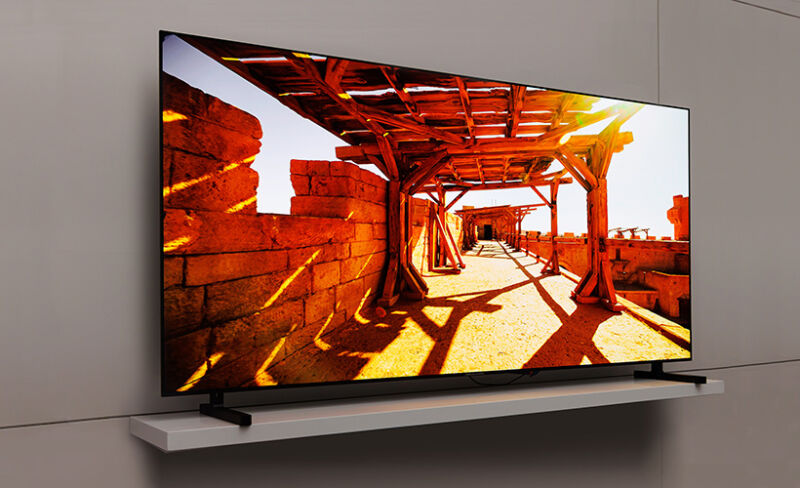LG And Samsung Are Getting Serious About Their OLED Panel Deal Again

It's been a rollercoaster ride for Korean tech groups LG and Samsung. It is said that in 2021 they will strike a big deal on OLED panels, but in 2022, negotiations seem to have stalled. It is now likely that negotiations will resume in 2023.
Samsung Electronics and LG Display have continued negotiations to supply Samsung with more than 200,000 white OLED panels (WOLED) for a new line of Samsung-branded LG TVs that will hit the market in 2024, The Elec reports. perhaps the start of a longer partnership.
When news of the talks first emerged a few years ago, it was said that the talks had started on the orders of the South Korean government in response to an international situation where Chinese LCD panel makers such as BOE were raising costs. LCD panels threaten the dominance of Samsung TVs. At the time, Samsung was using LCD technology for its TVs, competing with LG's focus on OLED.
Given these market changes, and that OLED accounts for a larger share of consumer display spending than LCD in general, Samsung will have to continue to diversify into OLED to ensure its future success, at least until micro-LEDs won't become a viable alternative to OLED. .LCD panels have some serious drawbacks in image quality compared to OLED, in that each pixel is not distributed individually, making it difficult to achieve high contrast ratios or deep black levels per pixel. In recent years, Samsung and other companies have introduced several innovations to overcome this shortcoming, but OLED won after ratings stagnated.
However, OLED has some drawbacks. OLED panels are more difficult to get very bright than LCD panels, which is important for stunning HDR highlights and viewing in brightly lit rooms. And, of course, OLED panels have an expiration date. Just as Samsung is trying to fix the biggest picture quality flaw in LCD screens, LG has come up with some ingenious solutions that reduce the risk of burn-in in OLED screens. For example, LG TVs can automatically detect network logos everywhere and dim or even change the pixels in those areas of the screen without you noticing, but can prevent pixels from burning quickly.
But this decision is not absolute. If Micro LED lives up to its promises, it offers the best of both worlds. Single-emission pixel with potential for high brightness and deep blacks without risk of burn-in. The companies and researchers working on microLED have yet to make the technology available to the mass market.
Meanwhile, at the very least, Samsung needs to ship more OLED TVs to stay competitive. The deal will allow LG and Samsung to work together to introduce a new line of Samsung WOLED TVs over the next few years.Samsung currently supplies QD OLED displays in its high-end TVs. WOLED panels allow companies to replace LCD displays in the mid-market, but can significantly reduce their dependence on Chinese companies in the LCD supply chain and give companies more leverage in negotiations with these companies.
Meanwhile, LG recently experienced significant operating losses. Depending on the terms of the contract, this could help LG close this gap.








